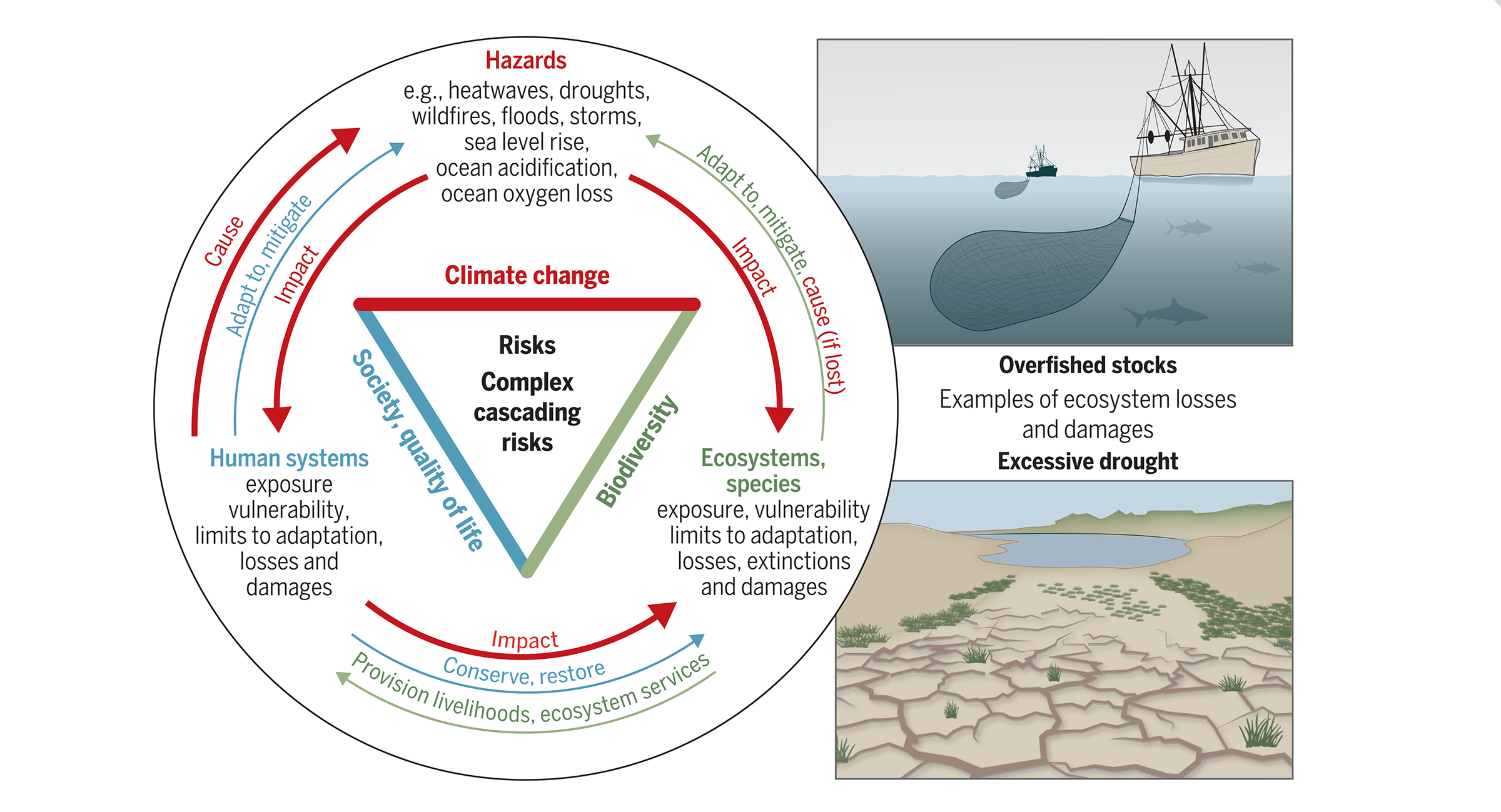BACKGROUND
Two intertwined crises threaten human well-being: Climate change—arising from human-induced greenhouse gas emissions, including those from the loss of biomass and biodiversity—is raising temperatures beyond those of the Holocene, when human civilization evolved and expanded globally. Mean warming and the increasing frequency and severity of extreme events in turn disturb ecosystem functioning, cause habitat loss to humans and biodiversity, and exacerbate the unprecedented loss of biodiversity already caused by human-induced habitat degradation, overexploitation of natural resources, and pollution. Both crises reduce nature’s contributions to people, which sustain well-being, livelihoods, economies, and development prospects and also support climate change adaptation and mitigation. Failing to act will increase human vulnerability, including poverty, food insecurity, involuntary displacement, and political instability and conflict. The coupled global climate and biodiversity crises and their societal impacts concern land, freshwater, and ocean ecosystems alike but are insufficiently tackled by current actions, as identified by assessments of both the IPCC (Intergovernmental Panel on Climate Change) and IPBES (Intergovernmental Science-Policy Platform on Biodiversity and Ecosystem Services). None of the 20 2011–2020 Aichi biodiversity targets and none of the mileposts on climate trajectories intended to limit warming to 1.5°C have been met.
ADVANCES
Climate, biodiversity, and societal challenges are intertwined but are often treated as singular problems. Solutions exist with cobenefits across sectors. In intact and functional ecosystems, nature is efficient at carbon capture (by photosynthesis) and sequestration (long-term removal from the carbon cycle), provided that warming is limited to 1.5°C or below through ambitious emissions reductions. Strengthening the biosphere on land, in freshwater, and in the ocean will support climate change mitigation, adaptation, biodiversity, human well-being, and livelihoods. Mounting scientific evidence points to the need to prioritize protection of remaining undamaged carbon- and species-rich environments and to implement targeted restoration projects, with more attention to effectively sustaining biodiversity and fairly distributed societal cobenefits. Three critical objectives for future spatial planning include a habitable climate, self-sustaining biodiversity, and sustained provisioning of nature’s contributions to people to support development and a good quality of life for all. Coordinated efforts among science and policy can identify and help navigate development pathways toward climate resilience for both human society and biodiversity.
OUTLOOK
New global biodiversity, climate, and sustainability targets envisioned for 2030 and 2050 will likely fail if drivers behind climate change and biodiversity loss remain insufficiently addressed or concrete actions to meet current political agreements and goals do not increase in pace and scale. The following actions are urgently needed. (i) Ambitious emissions reduction, combined with suitable adaptation measures. (ii) Effective protection of an average of 30 to 50% of surface areas across a mosaic of interspersed and interconnected land, ocean, and freshwater “scapes.” These cover a gradient, from pristine ecosystems; to spaces shared by humans and wild species and sustainably used; to spaces under intensive uses such as cities, which nonetheless can harbor substantial biodiversity in terrestrial and aquatic spaces. Efforts need to consider the specific spatial demands for healthy ecosystems. (iii) Building of development pathways and the underpinning of political, economic, and social institutions (including norms and rules) on visions such as collective responsibility, sustainable and circular uses of natural resources, avoidance of overconsumption and waste, and more equitable and participatory development regionally and globally. (iv) The enabling of just and equitable access to and benefits from natural assets across societies, groups, and individuals, securing good quality of life. Transformative action can overcome siloed approaches through institutional and individual change, achieving sustainability for nature and people, as well as human, ecosystem, and planetary health.
